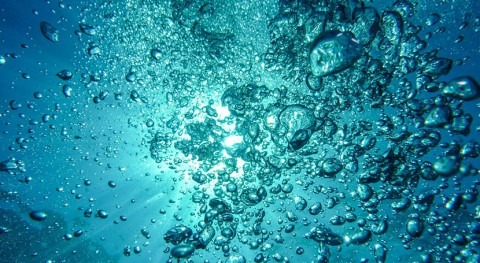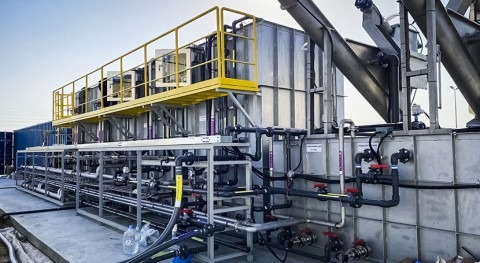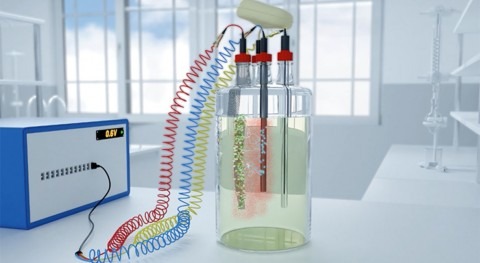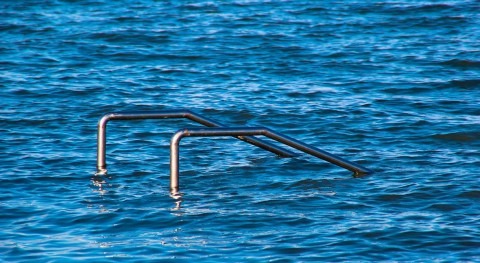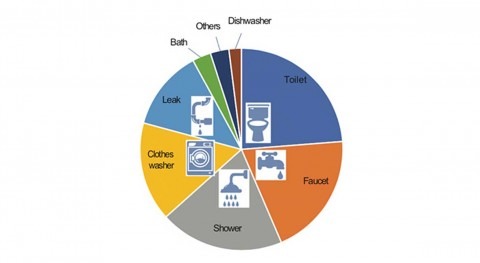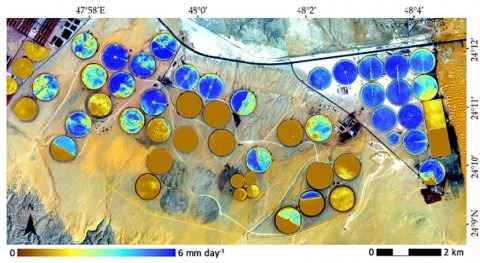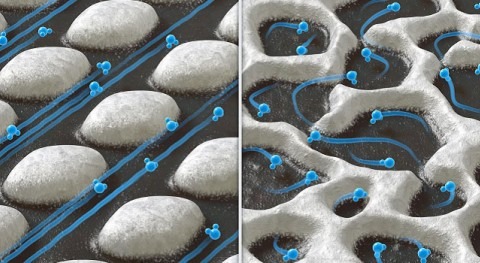A multifunctional device that captures the heat shed by photovoltaic solar panels has been developed by KAUST and used to generate clean drinking water as a way to simultaneously generate electricity and water using only renewable energy.
Water and energy production is deeply intertwined, says Wenbin Wang, a Ph.D. student in Peng Wang’s labs at the University's Water Desalination and Reuse Center. Conventional solar farms use fresh water to wash dust from the panels. Meanwhile, water desalination plants consume a lot of electricity to produce fresh water from seawater. “The water-energy nexus is one of the main issues threatening sustainable global development,” Wenbin says.
Professor Wang and his team have developed a device that could ease this problem. Commercial PV panels turn sunlight into electricity with a maximum efficiency of 20 percent. The remaining 80 percent is wasted, mainly just shed into the surrounding air as heat. The team has designed an integrated device that could capture this heat and use it to generate fresh water.
The researchers built a device in which a stack of water channels, separated by porous hydrophobic membranes and heat conduction layers, were attached to the underside of a commercial PV panel. Waste heat from the panel vaporized seawater in the uppermost channel; the vapor crossed the porous membrane and condensed as fresh water in a clean water channel just below. As the vapor condensed, its heat passed through a thermal conduction layer to the next seawater channel, recycling the energy to purify more water.
Using three stacked layers of water distillation channels, and passing the energy from layer to layer, the device produced up to 1.64 litres of water per square meter of solar panel surface every hour. That is more than double the water output of traditional solar stills, which use a one-stage design, Wenbin says. Meanwhile, the PV panel’s electricity output was unaffected by the water desalination taking place beneath it.

Heat from a solar panel (upper surface) drives water vapor from seawater channels (dark blue) across porous membranes (orange) into freshwater receiver channels (light blue).© Wenbin Wang 2019
As additional benefits of the design, water and electricity could be cogenerated on the same land, sharing a mounting system. The team now aims to incorporate agricultural production into the system, Wenbin says. “Raising sheep in the field of PV farms is feasible because grass grows well using the fresh water from solar-panel washing,” Wenbin says. “A PV farm with sheep grazing while seawater is being desalinated using our device could be ideal in arid regions near the coast.”





